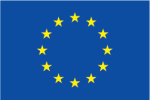If we wanted to teach students integrity in the treatment and communication of information, what could a core course in research integrity include? In the first weeks, students should learn the importance of epistemic virtues, such as love of truth and epistemic responsibility. In the next weeks, students should learn some basic cognitive skills and knowledge required to apply these epistemic virtues. This would imply first improving students’ ability to recognize reliable sources, and then giving them some basics for recognizing accurate content. Most importantly, students should learn to apply these skills to the evaluation and transmission of scientific content. This could involve for instance summarizing the main strengths and weaknesses of scientific papers or newspaper articles on scientific research.
We will never be in a position of teaching any single student how to be a perfect evaluator of information. Students will still sometimes be (legitimately) lost in the flow of information that they will encounter in daily life. But we should be thinking about students simply as one node in a network of epistemic agents. Improving the average accuracy of each citizen can have large effects, as this reverberates and ultimately leads to large decrease in the transmission of inaccurate news. By teaching students how to be better evaluators of information, we are building a general public that will in the long run improve through collective intelligence.
References
Douglas, H. (2014). Scientific Integrity in a Politicized World. In Logic, Methodology and Philosophy of Science. (pp. 253–268).
Gallotti, R., Valle, F., Castaldo, N., Sacco, P., & De Domenico, M. (2020). Assessing the risks of ‘infodemics’ in response to COVID-19 epidemics. Nature Human Behaviour, 4(12), 1285–1293. https://doi.org/10.1038/s41562-020-00994-6
Guess, A., Nagler, J., & Tucker, J. (2019). Less than you think: Prevalence and predictors of fake news dissemination on Facebook. Science Advances, 5(1), eaau4586. https://doi.org/10.1126/sciadv.aau4586
Feature image author – @freepik


Leave a Reply